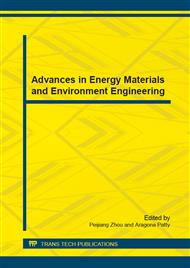p.475
p.482
p.487
p.495
p.501
p.506
p.511
p.515
p.519
Applications of Variable Fuzzy Set Theory and GIS for Water Resources Vulnerability Assessment of Yellow River Delta
Abstract:
The Yellow River delta is the Lord area of national high efficient ecological-economic region and Shandong peninsula blue economic region, and it has an important strategic status. This paper integrates variable fuzzy set theory with geographic information technology (GIS) to construct the vulnerability evaluation model of Yellow River delta water resources. First, The study area is partitioned into different evaluation zones (sub-area) based on the spatial recognition technology of GIS; Second, the evaluation index system is formulated in terms of the two aspects of water resources vulnerability, natural and human factors; Finally, city of Dongying is selected as study area, which accounts for 93% of the Yellow River delta, to verify the proposed model. The results indicate that the water resources vulnerability of the Yellow River delta greatly changes in space, the region of coastal, Xiaoqing river and Zhimai river shows high vulnerability, while the region along the Yellow River has low vulnerability. In conclusion, the proposed model can effectively identify water resource vulnerability in space.
Info:
Periodical:
Pages:
501-505
Citation:
Online since:
December 2014
Authors:
Price:
Сopyright:
© 2015 Trans Tech Publications Ltd. All Rights Reserved
Share:
Citation:


